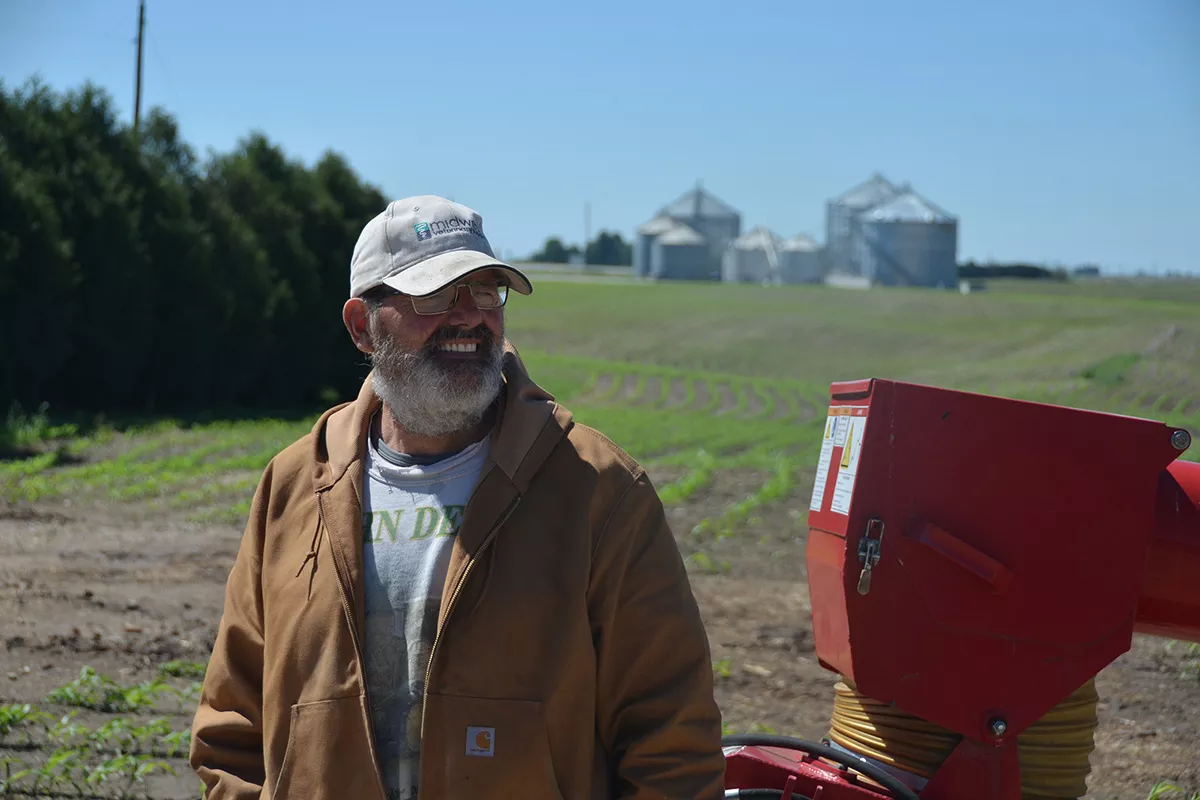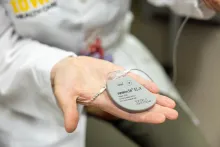Two months after open-heart surgery, Dan completes fall harvest

When Dan Berns, of Farmersburg, Iowa, went to his community hospital emergency room with a high fever and severe abdominal pain last June, he learned that he had sepsis.
Dan’s ascending aorta, which had been replaced five years earlier to repair an aortic aneurysm, had become infected. He needed another open-heart surgery to get rid of the infection.
This time, his heart surgeon referred him to the University of Iowa Heart and Vascular Center, where cardiothoracic surgeon Arun Singhal, MD, replaced the aorta and cleaned the infection.
Three weeks after surgery, Dan, 63, was back to working his farm.
“I was very fortunate to have the surgeon and nurses I did,” Dan says. “They had to do a heck of a job to get me back so fast.”
A life-threatening infection
The diagnosis of sepsis was especially scary for Dan. Five years earlier, his brother had died from sepsis following surgery for bicuspid aortic valve disease (BAVD).
In fact, it was his brother’s tragedy that led Dan to finding out he had an aortic aneurysm. BAVD is a genetic condition. After his brother’s death, Dan got tested to see if he had it. That’s when his doctor discovered his aortic aneurysm.
“I was lucky they found it because it was ready to burst,” Dan says.
Now sepsis was making Dan seriously ill. The infection caused severe headaches, mini-strokes, and black spots on his feet. It damaged his spleen, an organ crucial to fighting infection.
But he was also concerned about facing a second open-heart surgery.
‘He made me feel confident’
Dan says Singhal took the time to talk to him about the procedure in a way that made a big difference.
Singhal says he’s able to earn that kind of trust from patients like Dan because of the skill and dedication of the entire UI Heart and Vascular Center team.
“We have doctors dedicated to aortic work and all the tools to do comprehensive aortic surgery,” Singhal says. “Other hospitals may have pieces of what we offer. We offer it all. We have a good team of people who know their stuff. As a surgeon, I know everyone’s going to do the right thing along the way, and I can concentrate on the surgery.”
Grateful for a full recovery
Because the sepsis infection involved blood vessels that lead to the brain, Dan’s body temperature had to be cooled to 57 degrees during surgery, protecting his brain and stopping his blood flow so that Singhal could repair the blood vessel.
Dan’s blood flow was stopped for six minutes, allowing Singhal to cut out and replace the infected area. It took four more hours to complete the procedure.
Dan woke up happy to be alive and couldn’t believe how good he felt.
“I felt so much better after surgery this time than the first time,” he says.
An aortic repair usually requires seven to 10 days in the hospital. Dan went home after four and was walking three miles a day two weeks after he got home.
He was back to working in the fall, combining 2,000 acres and working up to 16 hours a day and doing his best to live well.
“I want to stick around for a while,” Dan says. “I try to take care of myself. It wouldn’t be fair to Dr. Singhal for all the work he put in to save me.”
Learn more about life-changing care from the experts at the UI Heart and Vascular Center.
Patient Stories

